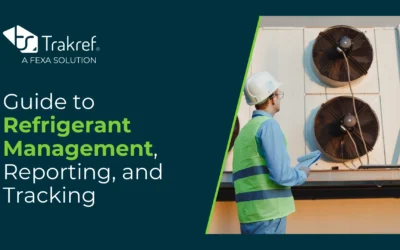ARTICLE
Which Service Model is Best For Your Facilities Maintenance Program?
Learn the difference between insourcing, outsourcing, and hybrid service models and which one is best for you.
The service model you choose for your facility maintenance program has a big impact on your day-to-day operations–and your profits.
Facility maintenance is not just about keeping the lights on and the air conditioning running. It’s about maintaining operational efficiency in a way that controls costs and ensures consistent high-quality service across all of your locations.
Some corporate facilities managers hire their own in-house maintenance staff to address the company’s needs, while others work with one or more outsourcing partners. Still others combine these two approaches into a hybrid model.
There is no right or wrong model across the board, because every approach has its strengths and weaknesses. However, there may be a right or wrong model for your organization, based on the specific details of your operations. A local chain with 5 or 6 locations is going to have different maintenance needs than a huge corporation with thousands of facilities nationwide. Approaching facilities maintenance with a “one-size-fits-all” attitude is never going to work.
Choosing a model that doesn’t meet your needs can lead to increased operational downtime, unnecessary expenses, and service quality issues. The right service model, however, will give you a competitve edge through improved efficiency and resource optimization.
No matter what service model you choose, Fexa’s flexible CMMS can streamline your maintenance processes and create the best possible outcomes for your organization.
Three Core Service Models for Facility Maintenance
Generally speaking, there are two service models for facility maintenance: insourcing or outsourcing. However, a third model is emerging, as more companies choose a hybrid approach that combines the benefits of both insourced and outsourced maintenance. Let’s take a look at these three strategies.
Insourcing
In an insourcing model, facilities maintenance tasks are handled entirely by the company’s own internal staff and resources. This may mean that you have a dedicated in-house facilities maintenance team, or it may mean dividing maintenance tasks across different departments. Either way, everything is handled internally. You only bring in external help when a task exceeds your team’s professional capabilities.
Insourcing is great if you have a few, densely located sites. You control the staff, costs, and training. In short, everything is tailored to your specific needs. However, with insourcing, it can be hard to maintain the right balance of staffing, scheduling, and budgeting. It is also difficult to get skilled tradespeople into more general roles, because it’s unlikely that you would find an experienced plumber who wants to work as a general laborer just in case you have a plumbing emergency.
With insourcing, your skilled technicians may not be able to cover all of your needs. In-sourcing works best for companies that have a tight cluster of locations. For example, a regional chain store with 15 locations in one city would benefit from insourcing more than a large corporation with facilities in countless markets and regions. At that point, outsourcing may be a much better option.
Pros of Insourcing:
- You keep full control over the facilities management processes
- Your internal team develops intimate knowledge of the organization’s facilities and operations
- You have the ability to customize maintenance strategies to align with company goals
- The total cost may be lower than outsourcing
Cons of Insourcing:
- You have to develop internal facilities management expertise and resources
- When split between departments, maintenance tasks can distract from core business activities
- Limited access to specialized facilities maintenance equipment/tools
- It can be more difficult to scale up or down quickly when meeting the changing demands of your operations
Great Candidates for Insourcing:
- Organizations with specialized or complex facilities that require a high degree of customization
- Companies with sufficient in-house facilities management expertise and resources
- Businesses with a smaller number of facilities that are close together, so technicians can manage multiple sites
Outsourcing
When you outsource your facilities maintenance, you hand off some or all maintenance responsibilities to one or more external service providers. You may choose a specialized facilities maintenance firm, a general service company, or a small group of service providers for different aspects of your organization.
The key benefits of outsourcing include giving you access to all the trades you need on-demand, for both regular maintenance and emergencies. There is also no worry about scaling up or scaling down your team–your outsourcing partner takes care of that.
You also get the benefit of having skilled tradespeople working in their area of expertise. Instead of having a general laborer on staff who manages plumbing, electricity, refrigeration, and your HVAC system, your outsourcing partner can provide a plumber for plumbing needs, an electrician for electricity repairs, and so on.
Depending on your choice of software for facilities management, you can have just one contact for all of your facilities’ needs. It’s great to have fewer vendors to keep track of and one consistent technology platform that handles invoicing, work orders, reporting, and scheduling.
There are two main outsourcing models to be aware of.
Third-Party Network Model: Here, a facilities maintenance company partners with a network of trade specialists (e.g., electricians, plumbers, HVAC technicians). This allows the company to scale services up or down as needed to handle specific maintenance requirements.
Self-Performing Model: Under the self-performing model, the outsourcing company maintains its own staff of technicians, usually in larger regional markets. This provides a more direct level of control and specialization compared to the third-party network approach.
Pros of Outsourcing:
- You gain access to specialized facilities maintenance expertise and equipment
- You have the ability to scale resources up or down as needed
- There are significant potential cost savings through economies of scale
- You can free up internal resources to focus on core business activities
Cons of Outsourcing:
- You lose some direct control over facilities management processes
- You have potential communication and coordination challenges with external providers
- You become reliant on the service provider’s performance and reliability
- There are potential higher costs for specialized or customized maintenance services
Great Candidates for Outsourcing:
- Organizations with basic or standardized facilities maintenance needs
- Companies looking to reduce the operational burden of facilities management
- Businesses that lack in-house facilities management expertise or resources
- Corporations with facilities spread across a large geographic area
Hybrid Service Model
As you can probably guess for its name, the hybrid approach combines elements of both insourcing and outsourcing. In a hybrid service model, certain facilities maintenance tasks are handled internally while others are outsourced to external providers.
In this model, your organization maintains control over certain critical or specialized facilities maintenance tasks, while outsourcing other non-core or less complex responsibilities to external service providers. This allows organizations to leverage the expertise and resources of outsourcing partners while still retaining direct oversight of key facilities maintenance functions.
Pros of the Hybrid Approach:
- You maintain control over critical or specialized facilities maintenance tasks
- You can leverage external expertise and resources for non-core or less complex tasks
- There are potential cost savings from optimizing the balance between insourcing and outsourcing
- You have the ability to scale resources more flexibly as needed
Cons of the Hybrid Approach:
- There is increased complexity in managing both internal and external maintenance providers
- You have to find the perfect technology platform to meet your needs
- There is potential for communication and coordination challenges between internal and external teams
- It can be difficult to determine the optimal balance between insourcing and outsourcing
When to consider insourcing vs. outsourcing
Great Candidates for Insourcing:
- Organizations with specialized or complex facilities that require a high degree of customization
- Companies with sufficient in-house facilities management expertise and resources
- Businesses with a smaller number of facilities that are close together, so technicians can manage multiple sites
Great Candidates for Outsourcing:
- Companies looking to reduce the operational burden of facilities management
- Businesses that lack in-house facilities management expertise or resources
- Corporations with facilities spread across a large geographic area
- Facilities that need access to skilled tradespeople
Who benefits from a hybrid model? Combining the best of both worlds
The hybrid model is, essentially, a “best of both worlds” situation.
The hybrid approach can provide significant advantages over a purely insourced or outsourced model. Instead, you optimize the balance between internal and external resources, which allows you to potentially achieve cost savings. At a minimum, you improve your operational efficiency and reduce operational downtime at your locations.
Great Candidates for the Hybrid Approach:
- Organizations with a mix of specialized and standardized facilities maintenance requirements
- Companies seeking to maximize the benefits of both insourcing and outsourcing
- Businesses with the resources and expertise to manage a hybrid facilities maintenance model
Criteria that should guide your decision-making
How do you decide which service model is best for your organization? In addition to the guidance we’ve covered in this overview, it’s worth considering several other factors as you make your decision.
Consider these criteria:
What are your operational goals? Do you want to maintain your own team of maintenance professionals and tradespeople? Or would you like the flexibility of outsourcing most (or all) maintenance tasks to another company?
What are your budget constraints? In many cases, outsourcing looks more expensive until you consider the costs of operational downtime when you don’t have enough coverage or specialty trades available. Do a thorough analysis of how much insourcing, outsourcing, and hybrid models would cost before assuming one is cheaper than another.
How much control do you want over the maintenance process? If you’re looking for a hands-off approach, total outsourcing may be best. If you want to control every aspect of your facility maintenance, insourcing may be your only option.
How will the geographic distribution of your facilities impact your decision? Companies whose sites are concentrated in one region may be better suited for insourcing or a self-performing outsourced model, whereas a more widely distributed company may benefit from a third-party network approach. Consider the importance of scalable coverage and geographic spread.
How complex is your facility? Highly specialized, mission-critical sites may require the kind of control and customization that only insourcing can provide. Less complex, standardized facilities, on the other hand, can usually be managed just as effectively by a third-party outsourcing partner.
How Fexa can help
Fexa simplifies facility management by centralizing the processes of tracking, reporting, and communication. Regardless of which service model you use, we can help! Our flexible CMMS is designed to help you manage your workflows with ease and avoid operational downtime at your facilities.
This is what we know at Fexa:
Flexibility is critical.
A flexible CMMS that can be customized to your unique business needs is essential, whether you choose to insource, outsource or use a hybrid model for facilities maintenance. Fexa is set apart from legacy CMMS providers because of our obsession with providing you the most flexible facilities management system on the market.
Bottlenecks and downtime kill your profits–let’s eliminate both!
Our CMMS helps to reduce or eliminate bottlenecks and downtime through features like automation, mobile access, and seamless data integration.
To adapt to a changing market, you have to have scalability.
When your business grows, expands, shifts, or changes, Fexa’s scalable CMMS is ready to grow and shift with you. We can easily adjust to handle more assets, locations, and users without needing to do a major technology overhaul.
Long-term savings improve your ROI.
By addressing issues like outdated systems, manual processes, and compliance problems, Fexa’s CMMS delivers significant cost savings compared to our competitors.
Get Started With Fexa
Are you ready to learn more? We’re here to talk! Contact us today to request a free demo to see what we can do for you! Whether you’re interested in outsourcing, insourcing, or a hybrid model, we’re ready to make sure it all comes together!
Say goodbye to the never-ending to-do list.
Blog
Related Articles
Stay ahead of the curve with our insightful articles, expert opinions, and innovative trends. We are committed to providing you with valuable information and industry insights to help you optimize and manage your facility more effectively.
10 Questions To Ask Before You Write Your Next CMMS RFP
ARTICLE 10 Questions To Ask Before You Write Your Next CMMS RFPWhen it’s time to choose a new CMMS, there are a lot of things to consider! Most of the time, you are switching because there is a problem with your current CMMS. That means that your biggest priority is...
Guide to Refrigerant Management, Tracking, and Reporting
REFRIGERANT MANAGEMENT / FEXA TRAKREFGuide to the Refrigerant Management, Reporting, and TrackingHere's your ultimate guide to all things refrigerant management.You’ll find refrigerant management right at the intersection of environmental sustainability, regulatory...
Mitigating Risk When Hiring Service Providers and Contractors
ARTICLE Mitigating Risk When Hiring Service Providers and ContractorsIn facilities management, bringing on skilled, reliable service providers—whether they’re electricians, plumbers, or maintenance workers—can make all the difference in keeping things running...





